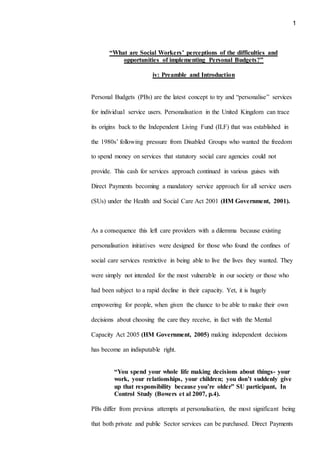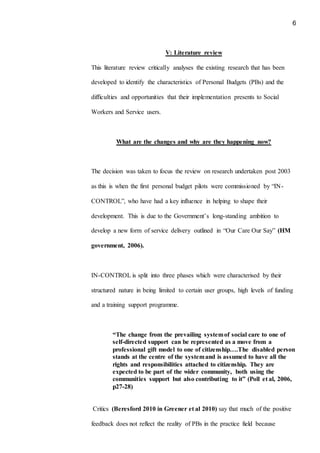This document summarizes the key points from a literature review on social workers' perceptions of the difficulties and opportunities of implementing personal budgets. It finds that while personal budgets were intended to empower individuals and facilitate more involved relationships with social services, in practice older adults are disproportionately less likely to be offered personal budgets. Social workers disclose barriers like unsuitability for those with dementia and lack of support networks. The review aims to understand how social workers can overcome these barriers to enable greater access and successful relationships through personal budgets for older adults. It utilizes interviews with social workers to gain open responses on how service delivery impacts professional relationships and identifies new theory on improving service delivery.























































